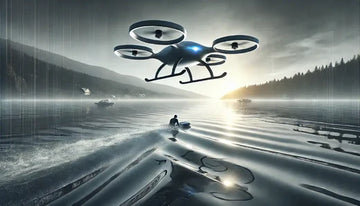Introduction
Drowning remains a leading cause of accidental death worldwide. Traditional water rescue methods, while invaluable, often face limitations in terms of speed, accuracy, and safety. With the advent of technology, water rescue drones have emerged as a game-changer, revolutionizing the way we respond to aquatic emergencies.
How Water Rescue Drones Work
Water rescue drones are specialized unmanned aerial vehicles (UAVs) equipped with advanced sensors and cameras to detect and locate individuals in distress. These drones can be deployed rapidly to scan large bodies of water, such as lakes, rivers, and oceans, and can operate in a variety of weather conditions.
Key features and capabilities of water rescue drones include:
- High-resolution cameras: Capture detailed images of the water surface and can zoom in on potential victims.
- GPS: Precisely pinpoint the location of the drone and the victim.
- Automatic flight modes: Enable the drone to follow pre-programmed flight paths or search patterns.
Applications of Water Rescue Drones
Water rescue drones offer a wide range of applications, including:
- Drowning prevention: Rapidly locate and rescue individuals who have fallen into the water.
- Marine accident response: Assist in search and rescue operations following boat accidents or other maritime incidents.
- Water quality monitoring: Collect data on water quality, such as temperature, salinity, and pollution levels.
- Law enforcement: Support law enforcement agencies in search and rescue operations, as well as surveillance and security.
Benefits of Water Rescue Drones
- Rapid response: Drones can reach the scene of an incident much faster than traditional rescue vessels.
- Improved accuracy: Advanced sensors and GPS technology enable drones to pinpoint the exact location of victims.
- Increased safety: Drones can be deployed in hazardous conditions, reducing the risk to human rescuers.
- Cost-effective: Drones can reduce the overall cost of search and rescue operations.
The Future of Water Rescue Drones
The future of water rescue drones is bright. As technology continues to advance, we can expect to see even more sophisticated drones with enhanced capabilities. Some potential developments include:
- Artificial intelligence: Drones equipped with AI can make more autonomous decisions and learn from past experiences.
- Hybrid drones: Combining the advantages of fixed-wing and multi-rotor drones for increased endurance and payload capacity.
- Integration with other technologies: Drones can be integrated with other technologies, such as underwater robots, to create a more comprehensive rescue system.
Conclusion
Water rescue drones have the potential to save countless lives and protect our waterways. By combining advanced technology with human ingenuity, we can create a safer and more resilient world.





